How to train a cat in 10 days
 Well, maybe a little longer…but it can be done! ?
Well, maybe a little longer…but it can be done! ?
There’s a great book out by Sarah Ellis and John Bradshaw called The Trainable Cat. Sarah Ellis was interviewed on NPR’s Fresh Air which is when this training came to our attention, and we were so impressed that we knew we had to share the insights you! Through training, Ellis is able to call her cat to come, get it to walk into its carrier to go the vet (any pet owner knows that this can be a daunting task!), take medicine and be friendly with her dog and baby. Pretty impressive! Below we share the highlights of this great interview, which you can listen to in full here.
Having a cat as a pet is a rewarding experience—they are intelligent creatures, with bold personalities and offer love and affection, but they can also be stubborn, and difficult to control. Ellis purports that although the process takes a bit more patience and understanding than with a dog, cats are creatures of habit, and will pick on training swiftly. The key is adopting training early, and being consistent.
Cats are a creature of their own kind
Cats and dogs are very different creatures. Where dogs will soak up affection and tend to be sociable and trusting by nature, cats have a tendency to be very territorial and they need to create a place where they feel secure by becoming very familiar with it. This is why when you take a cat to the vet, for example, they have a very hard time adapting to the new surroundings and also are insecure when they return home. Ellis believes that this anxiety can be reduced through a very simple means: familiarizing your cat with its carrier, so that it feels comfortable with it, and sees it as an extension of its personal space.
“So the first thing we would want to teach a cat – I think every cat should be taught this as a life skill – is that the cat carrier can become a portable place of safety and security. It is a safe, secure place and is part of the cat’s normal territory. And now we have a portable item of security, just like for the dog, its owner, for the cat, its cat carrier. And that’s the foundation, I think, for training in terms of novelty.”
Most people put their cat carrier out of sight when it’s not in use, however, Ellis says that leaving it out in an area that the cat can access is a good way to familiarize it, so rather than it being a signal that change is coming, the cat feels protected by the space, and comfortable within it.
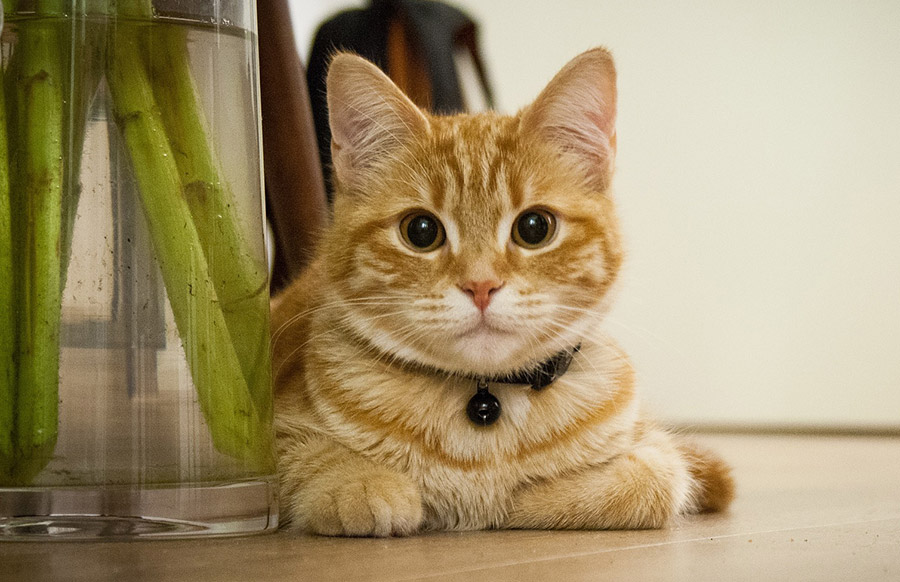 Live in the moment
Live in the moment
Rewards and punishments are another way in which cats perceive their human owners and the treatment they receive from them. Cats tend to live in the moment, so you need to create an association between the action and the moment it happens. In terms of rewarding your cat, Ellis explains:
“If you wait a couple of minutes, what you’ll, in effect, be rewarding is the behavior that’s happening in those couple of minutes later. So cats really, really are a little bit unforgiving, if you like – as are many other animals – in terms of if you are not good with your timing of your training. And by timing, I mean the delivery of the reward because they need to have the two things happening very, very close in time to know that the association is between those two things. And that’s classical conditioning. That’s not necessarily unique for the cat. That’s the same with any animal.”
Ellis is not an advocate of punishing a cat for poor behaviour as she believes it can be very damaging to the owner-pet relationship. Again, this goes back to the idea that cats live in the moment, so if the timing of your punishment is off it will be misperceived by the animal
“…the cat will associate that punishment with you and may not associate it with the actual act of what it’s doing because you’re very salient in that environment, at that time, and you are the one delivering the punishment. And so all you’re doing then is teaching your cat that you are not a very good person to be around, that you deliver quite unpleasant consequences and, therefore, the cat will start to avoid you rather than stopping to do that behavior.”
Rather than punishing your cat by spraying it with a water bottle, try instead to redirect its focus onto what you would rather it be doing. So if Felix is scratching the heck out of your couch, redirect its attention to a scratching post—something it is allowed to do.
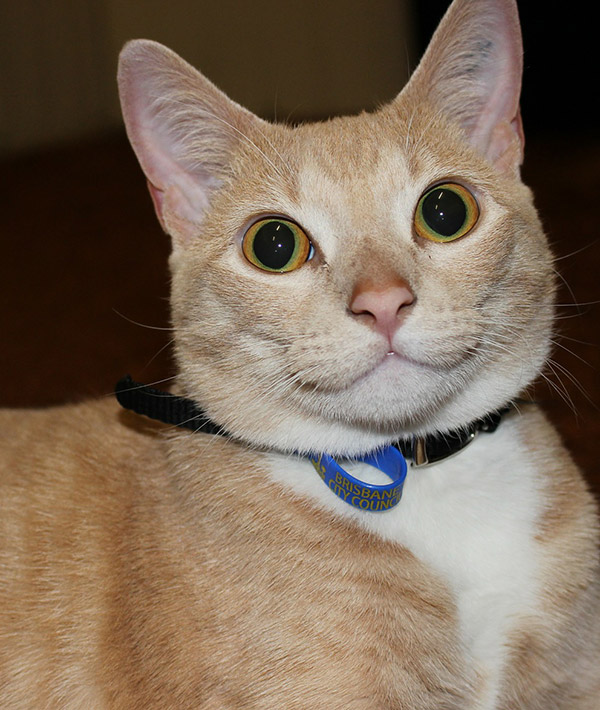
More than just a name
Pretty early in life, cats get to know their name and they associate it with you needing their attention. To train a cat to come on command, rather than just to answer to their name, Ellis recommends thinking of a specific word —come, here, etc.—that you will use to train the cat, and start working with the cat in close proximity to you, about 1 to 2 metres away, with its favourite treat on hand.
“The cat should come to you purely because it knows you’ve got food, and it’s motivated for that food. So choose a time when the cat’s hungry. Choose a food it really, really likes. So as soon as the cat gets up and starts to walk towards you – and we’re only talking, at this stage, a few steps – you then give that cat that reward. And you repeat that in different locations, in different places in the house, and you gradually increase the distance between you and the cat.”
Cats, and animals in general, respond to trained behaviour so rewarding them for their hard work—remember: in the moment—and showing them all the love and affection they deserve can go a long way in building your relationship with your cat and to them having a happy life.
Again, if you want to learn more consider buying the book The Trainable Cat or listening to the podcast.


 When we hurt, we’ll likely treat it ourselves if it’s minor, or if it’s more significant we can explain it to someone else, such as a doctor, and get help from them. Our pets can hurt too, but they can’t come and tell us, at least not directly. It’s our job to understand how our pets tell us that they are in pain and then to do what’s necessary to ease their suffering.
When we hurt, we’ll likely treat it ourselves if it’s minor, or if it’s more significant we can explain it to someone else, such as a doctor, and get help from them. Our pets can hurt too, but they can’t come and tell us, at least not directly. It’s our job to understand how our pets tell us that they are in pain and then to do what’s necessary to ease their suffering. Hiding (mostly in cats)
Hiding (mostly in cats) Abnormal Movement
Abnormal Movement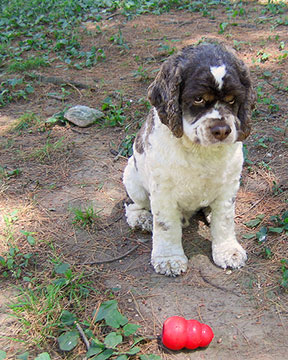 seeking more affection than normal
seeking more affection than normal What To Do
What To Do It may be difficult for you to imagine your sweet little housecat Hermione as a predatory jungle beast, hiding in the tall grass, hungrily waiting for a snake to slither along her path, grassor a little mouse to make the wrong turn and wind up in her sights. Or perhaps your little dachshund Schnitzel, charging through the forest like a wolf on the hunt. But our domesticated cats and dogs are the descendants of those feral animals, and will sometimes behave just like their ancestors in many ways.
It may be difficult for you to imagine your sweet little housecat Hermione as a predatory jungle beast, hiding in the tall grass, hungrily waiting for a snake to slither along her path, grassor a little mouse to make the wrong turn and wind up in her sights. Or perhaps your little dachshund Schnitzel, charging through the forest like a wolf on the hunt. But our domesticated cats and dogs are the descendants of those feral animals, and will sometimes behave just like their ancestors in many ways.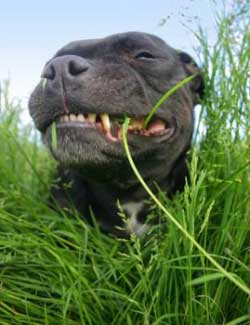 They need the grass to help them regurgitate
They need the grass to help them regurgitate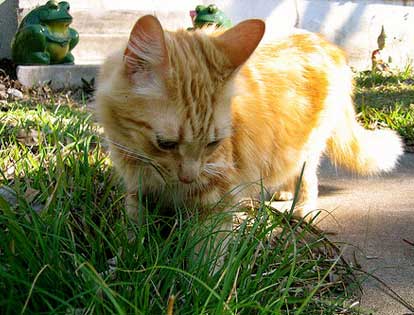
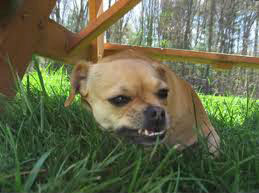 Wild dogs ate whatever they could forage, and then might find themselves in distress, with very upset tummies. If Schnitzel has consumed something bad for him, you might find him galloping out the door, making a beeline for some tender stalks of grass, stuffing himself until he purges and alleviates his discomfort.
Wild dogs ate whatever they could forage, and then might find themselves in distress, with very upset tummies. If Schnitzel has consumed something bad for him, you might find him galloping out the door, making a beeline for some tender stalks of grass, stuffing himself until he purges and alleviates his discomfort. Oat grass’s benefits include:
Oat grass’s benefits include: OCD and your pet
OCD and your pet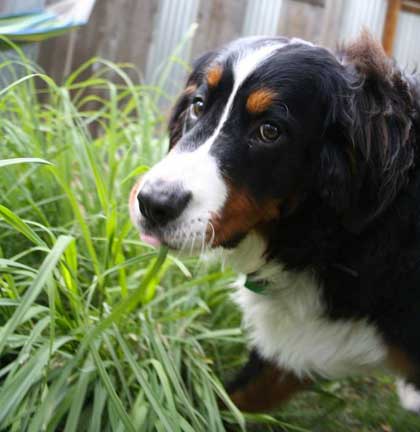 A few things to remember
A few things to remember